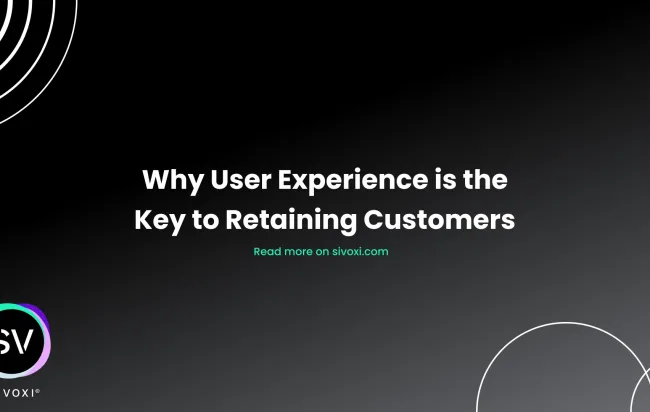Why User Experience is the Key to Retaining Customers
In today’s competitive digital landscape, offering a product or service that simply works isn’t enough. User Experience (UX) has become a critical factor in determining whether customers stick around or move on to a competitor. Understanding the importance of UX and how it impacts customer retention is essential for any business aiming for long-term success.
The Power of First Impressions
First impressions are powerful, especially in the digital world. When users interact with your product or service for the first time, they quickly form an opinion based on their experience. If the UX is intuitive, seamless, and visually appealing, users are more likely to continue using the product and explore its features. A positive first impression can set the tone for a lasting relationship with your customers.
Building Trust Through Consistency
Consistency in UX design is key to building trust with your customers. A consistent experience across all touchpoints—whether it’s your website, mobile app, or customer support—reassures users that they can rely on your brand. When users know what to expect, they feel more confident in their interactions, leading to increased satisfaction and loyalty.
Reducing Friction to Enhance Satisfaction
Friction in the user experience—such as confusing navigation, slow loading times, or complicated processes—can frustrate users and drive them away. By identifying and eliminating these pain points, you can create a smoother, more enjoyable experience that keeps users engaged. A frictionless UX not only enhances satisfaction but also encourages repeat usage and word-of-mouth referrals.
Personalization as a Retention Strategy
Personalization is a powerful tool in UX design that can significantly impact customer retention. By tailoring the user experience to individual preferences, behaviours, and needs, you create a more relevant and engaging experience. Whether it’s personalized recommendations, targeted content, or customizable features, personalization makes users feel valued and understood, increasing their likelihood of returning.
The Role of Feedback in Continuous Improvement
User feedback is invaluable for improving the UX and retaining customers. Regularly collecting and analysing feedback allows you to identify areas for improvement and address any issues before they become deal-breakers. By actively listening to your customers and adjusting based on their input, you demonstrate a commitment to their satisfaction, fostering long-term loyalty.
Measuring the Impact of UX on Retention
To fully understand the impact of UX on customer retention, it’s important to track and analyse relevant metrics. Key performance indicators (KPIs) such as user engagement, repeat usage, and customer satisfaction scores can provide insights into how well your UX design is meeting user needs. By continually monitoring these metrics, you can make data-driven decisions to enhance the user experience and retain more customers.
Prioritizing UX for Long-Term Success
User experience is more than just a design consideration—it’s a strategic factor that directly influences customer retention. By prioritizing UX and focusing on creating a seamless, personalized, and enjoyable experience, businesses can build stronger relationships with their customers and achieve long-term success. In a world where customers have endless options, delivering an exceptional user experience is the key to standing out and keeping them coming back.











